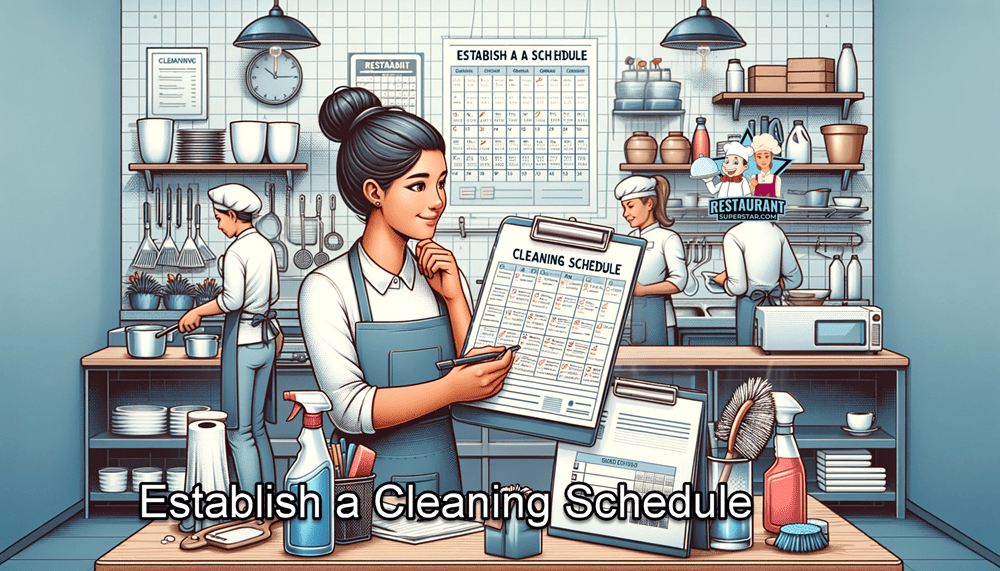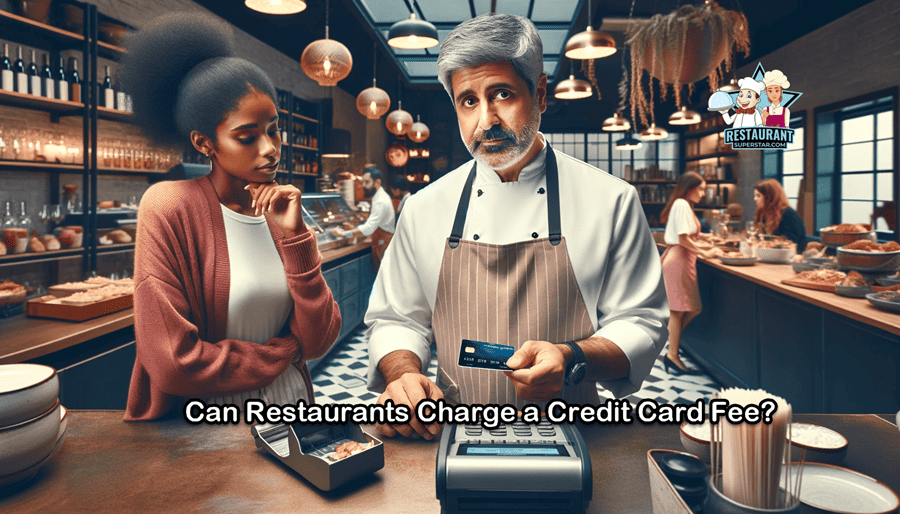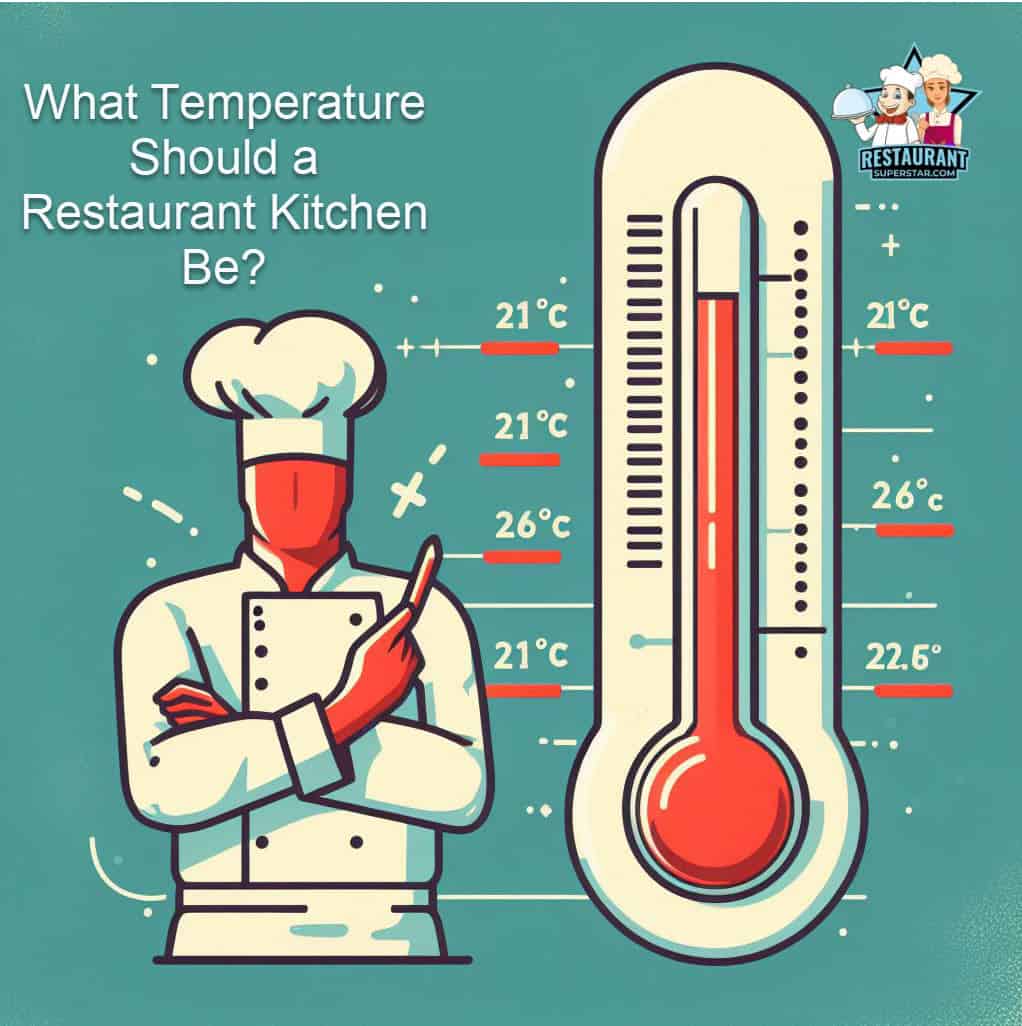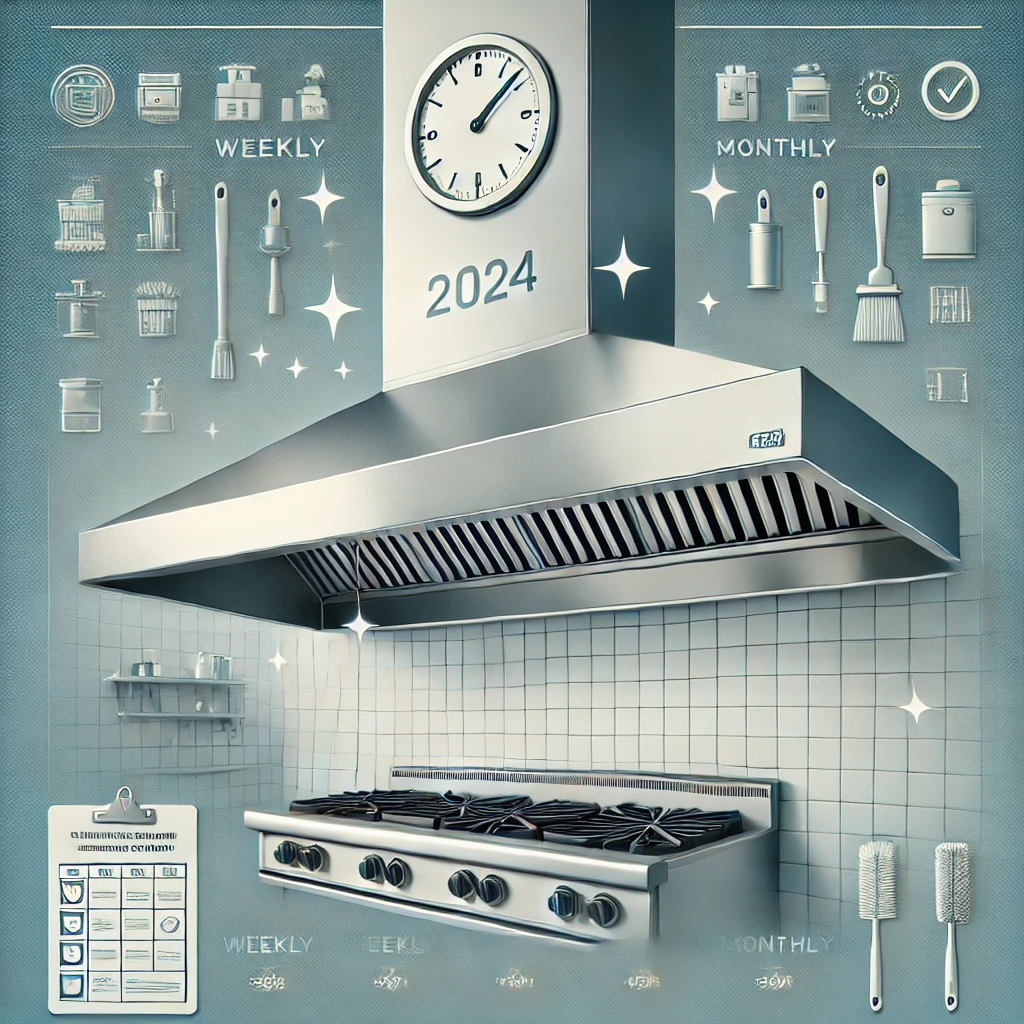How to Keep a Restaurant Clean?
You are in the right place if you’re wondering, “How to keep a restaurant clean?” This article will provide comprehensive answers to this vital question and delve into many more aspects essential for maintaining impeccable cleanliness in your restaurant.
How to Keep a Restaurant Clean?
How to Keep a Restaurant Clean? Maintaining a clean restaurant is about more than cleaning tables and mopping floors. It’s an intricate process that involves detailed schedules, understanding the nuances of hygiene in various spaces, and much more. It’s about creating an environment where cleanliness is as much a part of your restaurant’s identity as its menu.
You might think you’ve got the answer, but there’s much more to explore. In this article, we will cover everything you need to know about keeping a restaurant spotlessly clean – from high-touch surfaces that require your constant attention to the most effective cleaning techniques for your kitchen appliances.
Whether you’re a new restaurant owner, a young chef, or someone seeking comprehensive information, this article is your go-to guide.
Stay tuned because we’re about to dive into the world of restaurant cleanliness in a way you’ve never seen before.
Cleanliness in a restaurant isn’t just about making the place look good – it’s the cornerstone of your business’s success.
Let’s break it down:
- First Impressions Matter: Customers first notice the cleanliness When they walk through your doors. A spotless, well-maintained restaurant sets the stage for a fantastic dining experience. It tells your customers, “We care about every detail.”
- Food Safety is Non-Negotiable: This is huge. Keeping your restaurant clean is critical to prevent cross-contamination and foodborne illnesses. Remember, a safe kitchen is the heart of a successful restaurant.
- Happy Customers, Glowing Reviews: Impeccable restaurants foster delighted customers who are more inclined to leave glowing reviews and recommend your establishment to others. It’s all about generating that buzz!
- A Boost to Employee Morale: A clean working environment boosts staff morale and productivity. When your team feels good about where they work, it shows in the service they provide.
- Reputation Management: In the restaurant business, your reputation is everything. A clean and hygienic environment helps build a strong, positive reputation that can set you apart from the competition.
- Compliance with Health Regulations: Staying on top of cleanliness ensures you meet health and safety standards, keeping those pesky fines and closures at bay.
You might think, “Okay, cleanliness is key, but how do I manage it all?” Don’t worry; we’ve got you covered.
In the following sections, we’ll dive into practical, easy-to-follow steps to keep your restaurant sparkling clean and your customers returning for more. So, grab your notepad, and let’s get started on this cleanliness journey.
Establish a Cleaning Schedule

Let’s dive into the first crucial step of keeping your restaurant in tip-top shape: establishing a cleaning schedule. Trust me, it’s a game-changer.
Why a Cleaning Schedule is a Must-Have
- Consistency is Key: A cleaning schedule ensures that every nook and cranny of your restaurant receives regular attention. This consistency is what keeps those health hazards at bay.
- Teamwork Made Easy: By maintaining a clear schedule, your staff understands their tasks and timelines comprehensively. This transformation shifts cleaning from a chaotic chore to a smoothly running routine, ensuring efficiency and effectiveness.
- Professionalism: Regular cleaning is not just about hygiene; it’s also about presenting a professional image to your customers. A clean restaurant speaks volumes about your attention to detail and commitment to quality.
Creating Your Cleaning Schedule
- Break It Down: Start by dividing your restaurant into critical areas – kitchen, dining, bathrooms, and storage. Each area has its unique cleaning needs.
- Daily, Weekly, Monthly: Some tasks need daily attention (like wiping down tables), while others can be scheduled weekly or monthly (like deep kitchen cleaning).
- Customize to Your Needs: Every restaurant is unique, so tailor your schedule to fit your specific needs. Your dining area needs extra attention on weekends, or your kitchen gets particularly busy on certain days.
- Visible and Accessible: Once your schedule is set, ensure it’s visible to your team. Put it up in the staff area and have a digital version available.
Remember, a well-planned cleaning schedule is your first line of defense against health hazards and is critical in maintaining that professional sparkle that keeps customers coming back.
Think of it as the backbone of your restaurant’s hygiene practices – essential and non-negotiable.
Focus on High-Touch Surfaces
Now, let’s zoom in on a crucial aspect of restaurant cleanliness: high-touch surfaces.
These spots get a lot of love (read: contact) throughout the day, both from your team and your customers.
Identifying High-Touch Surfaces in Your Restaurant
- Where Hands Meet Surfaces: Think about where the most contact happens. The typical high-touch areas are door handles, menus, countertops, and POS systems.
- Don’t Forget the Little Guys: Light switches, faucet handles in the bathroom, and even the backs of chairs can be germ hotspots.
- In the Kitchen: In your kitchen, it’s the knobs on the stove, handles on the refrigerators, and any shared tools or equipment.
Disinfecting High-Touch Areas: How-To Guide
- Choose the Right Disinfectant: Not all cleaners are created equal. For high-touch surfaces, you need something that kills bacteria and viruses effectively.
- Make It Routine: Disinfect these areas multiple times a day. After the lunch rush? Quick wipe-down. Before closing? Another round of disinfecting.
- Involve Your Team: Make sure your staff knows the importance of this task. A little training session on effective cleaning techniques can go a long way.
By directing your attention to these critical areas, you are actively contributing to curbing germ transmission.
It’s a simple step but significantly impacts your restaurant’s overall hygiene.
Think of it as a daily mini-battle against germs that you and your team are fully equipped to win.
Maintain Floor Hygiene
Moving on to an area that’s often underfoot but should never be overlooked: your restaurant’s floors. Clean floors are not just about appearances; they are vital to overall restaurant hygiene and safety.
Why Clean Floors Matter
- First Impressions: A dirty floor can turn customers off before they sit down. Clean floors contribute to a welcoming atmosphere.
- Safety First: Spills and sticky spots can be slip hazards. Keeping floors clean is essential for preventing accidents.
- Hygiene Hero: Floors can harbor all sorts of unseen nasties. Regular cleaning keeps these unwanted guests in check.
Best Practices for Floor Cleaning
- Sweeping Up: Start with a thorough sweep. This removes the larger debris and preps the floor for mopping.
- Mopping Matters: Use a good-quality mop and a cleaning solution suitable for your type of flooring. Change the water frequently so you’re not just spreading dirt around.
- Spot Cleaning: Accidents happen. Train your staff to deal with spills promptly to prevent slips and stains.
- Deep Cleaning: Regular deep cleaning, especially in high-traffic areas, is a must. Consider using a professional cleaning service for this.
Choosing the Right Cleaning Solutions
- Know Your Floor Type: Different materials require different cleaners. What works for tile might be better for wood.
- Eco-friendly Options: Consider environmentally friendly cleaning solutions. They’re good for the planet and often just as practical.
Clean floors are a non-negotiable in the restaurant business.
They’re vital in creating a safe, hygienic, and inviting environment.
Regular sweeping, mopping, and attentive spill management go a long way in maintaining the cleanliness and safety of your restaurant’s floors.
Clean Kitchen Appliances and Equipment
Let’s turn our attention to the heart of your restaurant: the kitchen. Keeping your appliances and equipment clean is not just about shining surfaces; it’s critical to ensuring food safety and quality.
The Role of Clean Equipment in Food Safety
- Cross-Contamination Culprit: Dirty equipment can be a breeding ground for bacteria, leading to cross-contamination.
- Taste and Quality: Clean appliances ensure the food tastes as it should, without any unintended ‘extra flavors.’
- Longevity of Equipment: Regular cleaning also extends the life of your kitchen equipment, saving you money in the long run.
How to Clean and Sanitize Kitchen Equipment
- Post-Use Protocol: Clean appliances and utensils immediately after use. This prevents food residues from hardening and becoming difficult to remove.
- Deep Cleaning Schedule: Set a schedule for deep cleaning larger appliances. This might be weekly or monthly, depending on usage.
- Right Products for the Right Equipment: Use cleaning products suitable for each type of appliance. Stainless steel cleaners, degreasers for grills, and special dishwasher detergents are a few examples.
- Sanitization is Key: After cleaning, ensure everything is properly sanitized. Depending on the equipment, this might involve hot water, steam, or chemical sanitizers.
Preventing Cross-Contamination
- Separate Utensils: Use separate cutting boards, knives, and other utensils for different types of food (like raw meat and vegetables) to prevent cross-contamination.
- Regular Check-Ups: Routinely inspect utensils and equipment for wear and tear. Damaged items can harbor bacteria and should be repaired or replaced.
Clean kitchen appliances and equipment are non-negotiables in any restaurant. They are your frontline defense against foodborne illnesses and are crucial for maintaining the high quality of your dishes.
Regular cleaning and proper sanitization go hand in hand with food safety and can significantly impact your restaurant’s reputation for the better.
Disinfect Refrigerators and Freezers
Shifting our focus to another critical aspect of your kitchen: the refrigerators and freezers.
These are more than just storage spaces; they are guardians of your food’s safety and quality.
Why Clean Storage Areas Matter
- Safe Haven for Food: A clean refrigerator or freezer ensures that the food stored inside remains safe for consumption.
- No Unwanted Guests: Regular cleaning prevents the growth of mold, mildew, and bacteria.
- Efficiency and Longevity: Clean units run more efficiently and have a longer lifespan, saving energy and costs in the long run.
Cleaning and Sanitizing Your Refrigeration Units
- Empty and Unplug: Start by emptying out the unit and unplugging it. This gives you full access and ensures safety while cleaning.
- Clean Surfaces Thoroughly: Use a gentle, food-safe cleaner to wipe down all surfaces. Pay special attention to corners and crevices where crumbs and liquids can accumulate.
- Sanitize After Cleaning: Once cleaned, use a food-safe sanitizer to wipe down all surfaces. This step is crucial for killing any lingering bacteria.
- Dry Completely: Ensure that the unit is completely dry before restocking it. This prevents ice buildup and mold growth.
- Regular Checks: Make it a routine to check for expired or spoiled foods. Keeping your inventory fresh also contributes to cleanliness.
Defrosting Freezers
- Scheduled Defrosting: Regularly defrost freezers to prevent ice buildup. This improves efficiency and provides an opportunity for a thorough cleaning.
Maintaining clean refrigerators and freezers is essential for food safety and quality.
Regular cleaning and sanitizing schedule keeps your food safe and ensures that your refrigeration units operate at their best.
It’s a small effort that significantly impacts your kitchen’s overall hygiene and efficiency.
Address Grease Buildup
Grease buildup in a restaurant kitchen is a sneaky issue. It accumulates slowly but can have severe consequences if not addressed. Let’s tackle how to keep grease under control.
Understanding the Impact of Grease
- Fire Hazard: Accumulated grease is a significant fire risk. It can ignite easily and spread quickly.
- Hygiene Concerns: Grease buildup can attract pests and lead to unsanitary conditions.
- Air Quality: Excess grease in the air can affect the air quality in your kitchen, making the environment unpleasant and potentially unhealthy.
Techniques for Cleaning Grease Buildup
- Ventilation Hoods: These are grease magnets. Regular cleaning is essential. Use a degreaser and a non-abrasive scrubber to remove the grease. Don’t forget the filters!
- Exhaust Systems: These require professional cleaning. It’s not just about what’s visible; the ductwork needs attention too.
- Consistent Schedule: Make grease cleaning a regular part of your kitchen routine. Depending on your volume of cooking, this could be weekly or monthly.
- Professional Help: Hiring a professional cleaning service is often the best choice for deep cleaning, especially in the exhaust system. They have the tools and expertise to do a thorough job.
Tips for Ongoing Grease Management
- Train Your Staff: Make sure your kitchen staff knows how to handle and dispose of grease properly during daily operations.
- Prompt Attention to Spills: Clean grease spills immediately to prevent them from spreading or hardening.
- Use Grease Traps: Properly maintain and clean grease traps if your kitchen is equipped with them.
Staying on top of grease buildup is crucial for safety, cleanliness, and overall kitchen hygiene.
Ensuring a pristine and hygienic kitchen environment is crucial for minimizing the potential hazards of grease fires.
Regularly cleaning ventilation hoods and exhaust systems and practicing effective daily grease management can significantly mitigate these risks.
Not only does this ensure safety, but it also promotes a pleasant and healthy culinary space.
Encourage Employee Hygiene
Your restaurant’s cleanliness isn’t just about the space itself; it’s also about the people in it. Encouraging good hygiene practices among your staff is crucial for maintaining a clean and safe dining environment.
Why Employee Hygiene Matters
- Frontline Defense: Staff hygiene is your first defense against contamination in the kitchen and dining areas.
- Customer Perception: Customers notice everything. Seeing staff members follow good hygiene practices reassures them about the quality of your establishment.
- Health Regulations Compliance: Adhering to health and safety standards is not optional. Good employee hygiene helps ensure that you meet these standards.
Handwashing Protocols and Hygiene Practices
- Regular Handwashing: To ensure optimal hygiene, it is imperative to enforce a rigorous handwashing policy. Staff members are required to conscientiously cleanse their hands with soap and water for at least 20 seconds. This practice is particularly crucial after utilizing restroom facilities, dealing with waste, or touching their face.
- Handwashing Stations: Ensure these are well-stocked with soap, water, and hand towels. Consider adding hand sanitizer dispensers as well.
- Personal Hygiene Training: Conduct regular training sessions on personal hygiene, including proper handwashing techniques and when to use gloves.
- Illness Policy: Have clear guidelines for staff who are feeling unwell. They should know not to come to work if symptoms could contaminate food or make others sick.
Creating a Culture of Cleanliness
- Lead by Example: Management should model good hygiene practices. This sets the tone for the rest of the team.
- Regular Reminders: Remember hygiene with frequent reminders through signage in staff areas or quick team meetings.
- Feedback and Reinforcement: Praise staff when they follow proper hygiene protocols and provide gentle reminders when they don’t.
Employee hygiene is critical to your restaurant’s overall cleanliness and safety.
By establishing clear hygiene protocols and creating a culture that values cleanliness, you’re complying with health standards and showing your customers that you care about their dining experience and well-being.
Implement Proper Food Handling Practices
When running a successful restaurant, handling your food is as important as how you cook it. Proper food handling practices are essential for ensuring both food quality and safety.
The Importance of Safe Food Handling
- Preventing Foodborne Illness: Incorrect food handling can lead to contamination and diseases.
- Quality Control: Good food handling practices ensure that the quality of your food remains high from storage to plate.
- Building Trust: Customers trust restaurants that handle their food safely and responsibly.
Training Staff on Food Safety Practices
- Regular Training Sessions: Conduct comprehensive training sessions for all new hires and refresher courses for existing staff. Cover topics like temperature control, cross-contamination, and proper storage.
- Certifications: Consider having key staff members get food safety certifications. This not only improves safety but also boosts your restaurant’s credibility.
- Visual Aids: Use charts and guides to remind staff of safe food handling practices, especially in the kitchen. For example, temperature charts for cooking and storing different types of food.
Best Practices in Food Handling
- Temperature Control: Keep cold foods cold and hot foods hot. Use thermometers to ensure foods are stored and cooked at safe temperatures.
- Preventing Cross-Contamination: Use separate cutting boards, utensils, and containers for different types of food, especially for raw meat, poultry, and seafood.
- Proper Storage: Store food in airtight containers and keep them properly labeled and dated. Ensure that the oldest items are used first (FIFO – First In, First Out).
Implementing and maintaining proper food handling practices is crucial for any restaurant.
Not only does it prevent health risks, but it also ensures that the food you serve is of the highest quality.
Educating your staff and creating a food safety culture will go a long way in upholding your restaurant’s reputation and customer trust.
Regularly Inspect and Maintain Equipment
Keeping your restaurant’s equipment in top shape is not just about efficiency but safety and reliability.
Regular inspection and maintenance ensure your kitchen runs smoothly and safely.
The Need for Regular Equipment Maintenance
- Avoid Unexpected Breakdowns: Regular maintenance helps catch minor issues before they become big problems.
- Safety First: Faulty equipment can be a safety hazard for your staff and customers.
- Efficiency and Longevity: Well-maintained equipment performs better and lasts longer, saving you money and hassle in the long run.
Setting Up an Inspection and Maintenance Schedule
- Create a Checklist: Create a comprehensive maintenance checklist for every equipment piece, covering cleaning, wear and tear inspection, and minor adjustments. This ensures optimal word choice, well-structured content, enhanced readability, and eloquence while preserving the original meaning.
- Schedule Regular Inspections: Depending on the equipment, inspections could be daily, weekly, or monthly. Make these inspections a non-negotiable part of your routine.
- Keep Records: Document each inspection and any maintenance work done. This can help you track the equipment’s performance and anticipate future needs.
Tips for Effective Maintenance
- Train Your Staff: Ensure your team knows the basics of equipment care and what signs of wear or malfunction to look out for.
- Professional Servicing: Some equipment will require professional servicing. Know which items need this and how often, and budget for these expenses.
- Update When Necessary: Repairing old equipment is sometimes more costly than replacing it. Stay updated on the latest kitchen technologies and consider upgrades when they make financial and practical sense.
Regular inspection and maintenance of your restaurant’s equipment are crucial for ensuring safety and efficiency in your kitchen.
By proactively addressing maintenance requirements, you can prevent expensive repairs and minimize downtime, thereby ensuring the seamless operation of your kitchen as a finely tuned apparatus.
Enlist Professional Cleaning Services
While your staff can handle daily cleaning tasks, there are times when calling in professional cleaning services is a smart move. Let’s explore why and how to make the most of these services.
Why Professional Cleaning Services Are Beneficial
- Deep Cleaning: Professionals can perform deep cleans that go beyond the surface, reaching often overlooked areas.
- Expertise and Equipment: They have the tools and know-how to tackle tough jobs, like cleaning commercial-grade kitchens and ventilation systems.
- Time-Saving: Outsourcing intensive cleaning tasks frees your staff to focus on what they do best – creating unique dining experiences for your customers.
When to Consider Professional Cleaning
- Periodic Deep Cleans: Schedule these once or twice a year to complement your regular cleaning routines.
- Post-Renovation Cleanup: If you’ve had any construction or significant renovations, professional cleaners can help clear up the mess efficiently.
- Specialized Tasks: Certain areas, like hoods and kitchen ductwork, require specialized cleaning that professionals are equipped to handle.
Hiring Professional Cleaners: A How-To Guide
- Research and Referrals: Look for reputable cleaning services with experience in commercial kitchens. Ask for referrals from fellow restaurant owners or industry contacts.
- Check Credentials: Ensure the service is licensed, insured, and adheres to health and safety standards.
- Customize the Service: Work with the cleaning service to tailor their tasks to your restaurant’s needs. Be clear about what you expect and when.
- Evaluate and Adjust: After the service, evaluate the quality of their work and its impact on your operations. Use this to adjust future cleaning schedules or tasks as needed.
Enlisting professional cleaning services can significantly enhance your restaurant’s cleanliness, ensuring that every corner of your establishment meets the highest hygiene standards.
It invests in your restaurant’s image, safety, and overall customer satisfaction.
Conclusion
As we wrap up our comprehensive guide on how to keep a restaurant clean, let’s recap the key points we’ve covered. Remember, maintaining a clean restaurant is not just a task—it’s an essential part of your business that directly impacts customer trust and health standards.
- Establish a Cleaning Schedule: A well-structured cleaning schedule ensures that all restaurant areas are regularly and thoroughly cleaned.
- Focus on High-Touch Surfaces: Regularly disinfect surfaces frequently touched to minimize germ spread.
- Maintain Floor Hygiene: Clean floors are crucial for safety, hygiene, and creating a positive impression.
- Clean Kitchen Appliances and Equipment: This prevents cross-contamination and ensures food quality and safety.
- Disinfect Refrigerators and Freezers: Regular cleaning of these storage units maintains food safety and extends lifespan.
- Address Grease Buildup: Regularly cleaning greasy areas prevents fire hazards and maintains kitchen hygiene.
- Encourage Employee Hygiene: Staff hygiene plays a significant role in maintaining a clean and safe dining environment.
- Implement Proper Food Handling Practices: Proper food handling is critical to preventing foodborne illnesses and ensuring food quality.
- Regularly Inspect and Maintain Equipment: This ensures the safety and efficiency of your kitchen operations.
- Enlist Professional Cleaning Services: Professional cleaners can perform deep cleans that go beyond what your daily cleaning can achieve.
The level of cleanliness in your restaurant serves as a clear indication of your dedication to customer satisfaction and adherence to health standards.
It is a reflection of your commitment to ensuring the well-being of your patrons. It’s not just about passing health inspections; it’s about building a reputation for quality and safety that keeps customers returning.
A clean restaurant creates a welcoming atmosphere, enhances the dining experience, and fosters a sense of trust and loyalty among your patrons.
By implementing these practices, you’re not just maintaining cleanliness, you’re also improving your restaurant’s overall appeal and success.
Jeff Smith is a Restaurant Consultant with over 20 years of hospitality experience ranging from server to owner and general manager. He focuses on Restaurant POS technology as well as restaurant marketing. Check out our world-famous restaurant resources page for a comprehensive offering of hand-picked resources and tools to help your business. You can also check out some of our other restaurant business articles.




